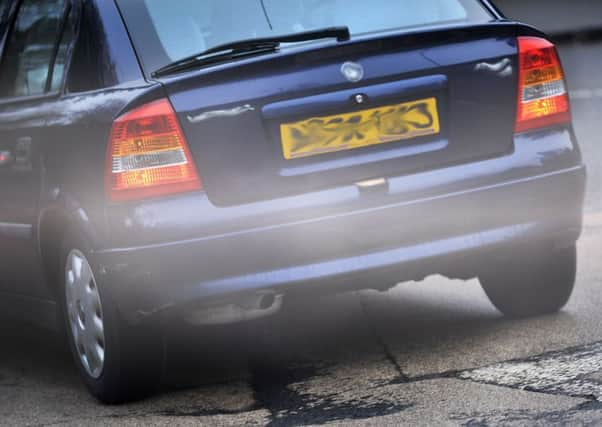North Lanarkshire pilot uses lasers to track vehicles' emissions


A busy junction will be used to test the device, which analyses exhaust gases and records number plates.
The experiment on the A725 in Whifflet could lead to drivers being sent letters highlighting the pollution they cause.
Advertisement
Hide AdAdvertisement
Hide AdThe North Lanarkshire Council pilot, which begins on Saturday for two weeks, follows testing of the Emissions Detecting and Reporting (EDAR) system by the East Central Scotland Vehicle Emissions Partnership, comprising East and West Lothian, Midlothian and Falkirk councils.
It was installed at the Maybury roundabout on the A8 in Edinburgh at the weekend, and on the A89 at Broxburn in West Lothian yesterday, following trials in London and Birmingham.
The council’s assistant business manager for pollution control Mark Findlay said: “The EDAR technology will be deployed at the road junction at Whifflet Street which is one of the Air Quality Management Areas in North Lanarkshire.
“It will provide a significant amount of data on emissions which will inform our efforts to improve air quality at this location as well as our wider Air Quality Action Plan.
Advertisement
Hide AdAdvertisement
Hide Ad“Having this technology gives us detailed information which would otherwise take years of traditional monitoring to obtain and we will be working with West Lothian and Edinburgh councils to share knowledge and data from the pilots.
“We will not be taking any enforcement action against vehicles that are considered high emitters during the pilot, but this pilot will help to shape policy and inform expert opinion about defining high emitters.
“A decision may be taken later to contact the owners of high emitting vehicles, likely to be goods vehicles, taxis or buses, to offer advice on how they could reduce emission levels.
“For example, we operate the ECO Stars scheme which offers free advice and guidance to fleet operators on improving fuel efficiency and reducing operating costs, which in turn contributes to improving local air quality.
Advertisement
Hide AdAdvertisement
Hide Ad“This work links into the Cleaner Air For Scotland Strategy CAFS which aims to introduce low emission zones in some of Scotland’s cities and towns by 2020 where this type of technology could be used.
“The equipment includes vehicle registration recognition which allows us to identify the vehicle manufacturer, model, fuel type and engine size all of this information is required to build a picture to understand areas of the transport fleet that need to be improved.
“The EDAR technology will provide us with high quality, accurate information to inform our local policy and practical work on reducing emissions and improving local air quality for years ahead.”
US firm Hager Environmental and Atmospheric Technologies, which developed the pole-mounted device, said it produced a 3D image of a vehicle’s exhaust plume.
Advertisement
Hide AdAdvertisement
Hide AdThis calculates the concentration of pollutants such as carbon monoxide, carbon dioxide, nitrogen dioxide and particulates.
A spokeswoman for Transport Scotland said: “The trial will help to identify those vehicles causing the most pollution, support future development work of the vehicle emission partnerships and gather accurate emission factors for use in modelling and awareness-raising in the future.”
Environmental group Friends of the Earth Scotland said the technology must be backed by new low emission zones, which the Scottish Government has pledge to trial.
Air pollution campaigner Emilia Hanna added: “It will only be of practical use once councils start placing high emissions standards on vehicles via low emission zones, as the Mayor of London has committed to do.
“Scotland’s air pollution remains a public health crisis, with over 2,500 people each year dying prematurely because of toxic emissions, primarily from cars.”